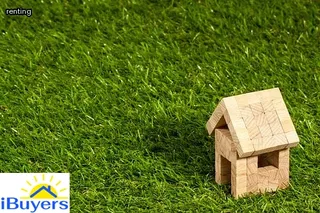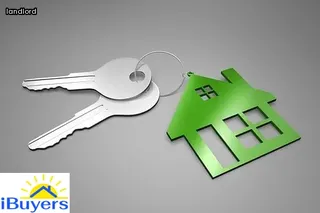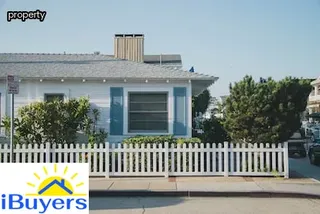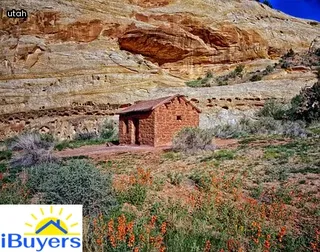As a Utah landlord, it is important to understand your rights and responsibilities as they pertain to tenant damage and property wear & tear. You have the right to ensure that all tenants abide by both state and local laws, including those related to tenant damage and property wear & tear.
It is also important to be aware of your responsibilities in this area, such as keeping track of damages and informing tenants of any changes in regulations or policy. Additionally, you must understand the various methods of collecting payment from tenants for damages caused, as well as how to properly document tenant-related expenses for tax purposes.
Finally, you should be familiar with how landlord-tenant laws may affect your ability to evict a tenant due to property damage or excessive wear & tear. By understanding these rules and regulations, landlords can better protect their investments and provide a safe living environment for their tenants.

When it comes to renting a property in Utah, landlords need to ensure that they are charging the right rental rate. This rate should cover both the estimated cost of tenant damage and wear and tear on the property.
To calculate an accurate rental rate for properties in Utah, landlords should first consider the size of the property, age of the building and any additional features that may increase its value. Additionally, landlords need to take into account any local or state regulations that may affect their decision when setting rates.
The location of the property is also important as renters may be willing to pay more for a rental close to amenities such as shops and public transport links. Finally, it is essential for landlords to factor in costs associated with repairs or maintenance due to tenant damage or wear and tear on their property when setting their rental rates.
As a landlord in Utah, it is important to make sure that your rental properties are accessible to all potential tenants. This means making certain that any modifications made to the property accommodate those with disabilities and guarantee access for any tenant.
Accessibility can be achieved in a variety of ways, such as installing wheelchair ramps, providing ground-level entryways, or adding handrails near stairwells. Additionally, it is important to consider accessibility when performing maintenance and repairs on the property.
Making sure pathways and doorways remain unobstructed and ensuring that walkways are clear of debris is essential for safe and comfortable living. Finally, you must make sure that any changes made comply with local laws and regulations as well as state building codes related to accessibility requirements.
By taking the necessary steps, landlords can ensure their rental units remain accessible while protecting themselves from potential legal liabilities.

In Utah, landlords are required to disclose certain information to tenants regarding property damage and wear and tear. Landlords must provide a written statement of the condition of the rental property at the start of the tenancy and include details such as any pre-existing damage or significant defects in the unit.
They must also list a contact person responsible for repairs and maintenance, list acceptable methods of payment, outline late fees and other charges, provide notice requirements for non-payment or termination, and describe procedures for handling security deposits. All disclosures must be provided in writing prior to signing a lease agreement.
Landlords in Utah are also required to adhere to state laws that protect tenants from discrimination based on race, gender, age, familial status, marital status, disability or sexual orientation. They must maintain safe living conditions including heat and hot water as well as adequate plumbing and electrical systems in working order.
Lastly, they must keep common areas clean and free from hazards such as broken glass or debris.
As a Utah landlord, it is important to be aware of both the tenant rights and responsibilities in order to maintain a successful rental relationship. Depending on the situation, landlords must ensure that they are compliant with all state laws regarding tenant-landlord relationships.
Tenants have certain rights that need to be respected by the landlord including the right to privacy, the right to proper notice before entry, and the right to timely repair requests. Furthermore, tenants also have specific responsibilities such as notifying their landlords of any damage done to their property and paying rent in full and on time each month.
All of these elements are essential for landlords when managing tenant damage and property wear & tear in Utah as they work together to create a safe living environment for tenants.

The legal rights of landlords in Utah are clear when it comes to tenant damage and property wear and tear. Landlords have the right to pursue compensation for any damage caused by tenants, either through a security deposit or other means.
Furthermore, they are entitled to inspect the property at any time with reasonable notice, and can even enter the premises if necessary in the event of an emergency. Landlords also have the right to terminate a lease agreement should there be significant damage or lack of upkeep on the part of the tenant that is not remedied within a reasonable period of time.
Tenants are required to pay for any repairs or replacements necessary as a result of their actions and must return the property in its original condition upon vacating. While these rights may vary from city to city, landlords should become familiar with local ordinances to ensure that all requirements are met according to state law.
As a property manager in Salt Lake City, Utah, it is important to understand the concepts of tenant damage and property wear & tear. Tenant damage occurs when a tenant causes physical damage to the property through their own negligence or malicious intent.
This can include things like holes in walls, flooded bathrooms, broken windows, burned carpets, etc. Property wear & tear typically refers to natural aging and deterioration of the unit due to everyday use by tenants.
For example, paint fading from sunlight exposure or carpet wearing down over time due to foot traffic. It is important for landlords in Utah to be aware of these two concepts so they can properly assess any potential damages and make necessary repairs quickly and efficiently.
Additionally, landlords should enforce preventative measures such as regular inspections and security deposits so they can identify damages early on and protect themselves from liability.

When assessing tenant damage vs normal wear and tear in rental properties, it is important for Utah landlords to understand the differences between the two. Damage caused by tenants should be repaired or replaced at their expense, while normal wear and tear should be covered by the landlord.
Tenant damage can include things like holes in walls, stains on carpets, broken windows or doors, and any intentional destruction of property. Normal wear and tear may include fading paint, worn out floors or carpets, minor scratches or dents that occur naturally over time due to regular use.
It is important to document all damages before a tenant moves in so an accurate comparison can be made when they move out. Landlords should also inspect the property regularly during tenancy to ensure that repairs are done when necessary and not delayed until the end of a lease agreement.
Understanding the difference between tenant damage and normal wear and tear will help Utah landlords protect their investments while providing quality housing for their tenants.
Creating an effective move-in checklist for tenants is a key factor in protecting landlords from tenant damage and property wear & tear in Utah. Landlords should ensure that a thorough inspection of the rental unit is conducted before any tenant moves in, including all areas of the home, such as kitchens, bathrooms, laundry rooms, patios, decks and common areas.
During this inspection, landlords should note any existing damages and take photographs for documentation. These photos can be used to compare against the condition of the rental unit when tenants move out so that landlords can determine if any new damage was caused by the tenant.
Additionally, it is important for landlords to provide tenants with an itemized list of all existing damages at the time of move-in so they are aware of what they are responsible for repairing or replacing upon move-out. By creating an effective move-in checklist and thoroughly documenting their rental units, Utah landlords will be better equipped to evaluate whether tenant damage or property wear & tear has occurred during their tenancy.

When crafting a comprehensive move-out checklist for Utah landlords, it is important to consider the potential for tenant damage and property wear & tear. As a landlord, you should always review the condition of your property before and after a tenant moves in or out.
Before a tenant moves in, document any noticeable damage on the premises and have the tenant sign off on it. After the tenant moves out, inspect all areas of the property for any additional damage that may have occurred during their stay.
Be sure to take photographs or videos of each area so you can easily compare them later if needed. In addition, ask tenants to leave their old keys with you so that you are able to access the property if they do not return them upon move-out.
Lastly, make sure to check all appliances and furniture for signs of wear & tear before releasing a security deposit or charging extra fees. All these steps can help protect landlords from financial losses due to tenant damage and improper care of their property.
Regular inspections of Utah rental properties are essential for both landlords and tenants. Tenants should be aware of the condition of the property they are renting and should keep a record of any damage that is present upon move-in.
By conducting regular inspections, landlords can ensure that their property is being taken care of by the tenant, while tenants can ensure that any damage or wear and tear is documented in case a dispute arises at move-out. This also provides an opportunity for tenants to address any maintenance needs early on in order to avoid more costly repairs down the line.
Regular inspections give landlords peace of mind that their investment is secure, while also giving tenants confidence that they will not be held liable for damages beyond normal wear and tear. Furthermore, inspections allow both parties to address issues promptly and prevent potential disputes from arising due to lack of communication.
In the state of Utah, landlords must take legal action within four years of the damage being inflicted or discovered by the tenant. In some cases, this statute of limitations may be even shorter.
If a landlord suspects that a tenant has caused damage to their property or caused wear and tear, they must consult with an attorney to determine if they have a valid claim and how long they have to file it. Landlords should also keep records of all damages, as these will help them make their case in court.
Additionally, landlords should consider drafting a lease agreement that clearly outlines both parties’ responsibilities when it comes to property maintenance and repair so that any damages can be addressed swiftly and appropriately. By taking proactive steps such as these, Utah landlords can ensure that their rights are protected in the event that their tenant causes damage or wear and tear on their property.

Once a tenant has moved out of their rental property in Utah, landlords generally have up to 60 days to charge a departing tenant for any damages they may have caused during the course of their tenancy. This is according to Utah law, which states that landlords must follow a few simple steps to ensure they are able to collect on damages from the tenant.
First, the landlord must document the condition of the property before and after the tenant moves out. Second, they must provide written notice to the tenant within 30 days of them moving out and give them an opportunity to reconcile any damage or discrepancies before taking legal action against them.
Finally, if no resolution has been reached within 30 days, they can then file a claim with The Utah Department Of Consumer Protection who will decide whether or not the tenant is liable for damages. In short, if you live in Utah as a renter and cause damage to your rental property, you should expect your landlord to hold you accountable for it up to 60 days after moving out.
Normal wear and tear on rental property in Utah is defined by the state's landlord-tenant laws. In general, normal wear and tear is any deterioration that occurs over time due to everyday use of the rental property by tenants.
Examples of normal wear and tear may include fading paint, small tears in carpet or wallpaper, minor scratches on walls, and slight chipping of tile or other surfaces. Landlords cannot charge tenants for reasonable wear and tear that accumulates over time as long as it does not substantially reduce the value of the property.
Tenants are expected to maintain the property in good condition, so landlords should inspect their properties regularly for signs of abuse or neglect. Additionally, landlords should ensure that tenants are aware of any rules regarding maintenance and repair so they can take proper steps to avoid excessive damage to rental property which could be considered abnormal wear and tear.
In Utah, tenants have the right to repair and deduct from their rent if the landlord has failed to maintain the premises in a habitable condition. Utah law states that landlords must keep their properties up-to-code and in safe and good repair, meaning they are responsible for any damages or wear and tear of the unit that occur due to normal use.
Tenants can make minor repairs themselves at the landlord’s expense if needed, but can also choose to hire a professional to do so. If the landlord does not make necessary repairs within a reasonable time frame, then tenants may be able to deduct an appropriate amount from their rent payment.
The tenant must notify the landlord of the issue before making any repairs or deductions and must provide receipts for any expense incurred in order to receive reimbursement. It is important for both landlords and tenants to understand their rights when it comes to property damage and wear & tear in Utah so that all parties can be protected under state law.